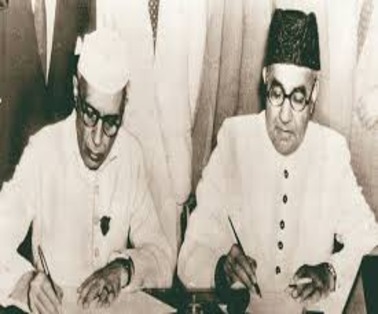November 30 marks the 12th death anniversary of IK Gujral, the 12th Prime Minister of India, who is best known for his foreign policy approach, the Gujral Doctrine
Key Points About Gujral’s Legacy
- Gujral’s tenure as Prime Minister was less than a year, often overshadowed in discussions about India’s heads of government.
- Gujaral tenure does not get much individual attention among India’s heads of government.
- However, he is the only Prime Minister with a foreign policy approach identified with his name — the Gujral Doctrine.
What is the Gujral Doctrine?
- Before becoming the Prime Minister, Gujral had held several Cabinet positions, including the External Affairs Minister portfolio twice.
- While both stints were short — under VP Singh from December 5, 1989 to December 19, 1990 and under HD Devegowda from June 1, 1996 to April 21, 1997 — they were significant.
- It was during his second tenure as EAM that Gujral delineated his approach towards India’s neighbours, which later came to be known as the Gujral Doctrine.
- This consisted of five basic principles, as outlined by Gujral at a speech in Chatham House in London in September 1996.
The Five Principles of the Gujral Doctrine
- First, with the neighbours like Nepal, Bangladesh, Bhutan, Maldives and Sri Lanka, India does not ask for reciprocity but gives all that it can in good faith and trust.
- Secondly, no South Asian country will allow its territory to be used against the interest of another country of the region.
- Thirdly, none will interfere in the internal affairs of another.
- Fourthly, all South Asian countries must respect each other’s territorial integrity and sovereignty.
- And finally, they will settle all their disputes through peaceful bilateral negotiations
Key Aspects of the Gujral Doctrine
- Interestingly, Gujral named the countries from which India would not expect reciprocity, and it did not include Pakistan.
- The Gujral Doctrine believed that India’s significant size and population naturally positioned it as a key player in South East Asia.
- To enhance its standing and reputation, the doctrine advocated adopting a non-dominant approach towards smaller neighboring countries. It, thus, recognises the supreme importance of friendly, cordial relations with neighbors.
- It also stressed the significance of maintaining ongoing dialogue and refraining from unnecessary provocations, such as commenting on the internal affairs of other nations.
Successes Of the Gujral Doctrine
- Gujral’s approach to foreign policy helped strengthen trust and cooperation in India’s neighbourhood.
- Gujral’s policy of non-reciprocal accommodation led to the signing of a 30-year treaty between India and Bangladesh on December 12, 1996.
- In fact, the 1977 treaty on water sharing between India and Bangladesh (after extensions in 1982 and 1985) had lapsed in 1988 and negotiations could not succeed because of inflexibility on both sides.
- He even ensured Bhutanese consent for digging of a canal from a Bhutanese river to augment the flow of water to Ganga and showed his willingness to revise the controversial Mahakali treaty with Nepal which was received well in Nepal.
- Another key marker of the Doctrine’s success was that Gujral’s successors as PM, from Atal Bihari Vajpayee to Manmohan Singh, continued following the same approach, despite coming from different ideological camps.
Criticism of the Gujral Doctrine
- Some of the successes of the Doctrine now appear limited, and Gujral has also received criticism for failing to convince the foreign affairs bureaucracy to follow the doctrine wholeheartedly.
- Gujral was criticised for going too soft on Pakistan, and leaving India vulnerable to the threats of the future, including the many terror attacks.
- In sections within Pakistan, meanwhile, the Doctrine was seen as India’s attempt to cosy up to other neighbours and isolate Islamabad.
To Download Monthly Current Affairs PDF Click here
Click here to get a free demo
Everything About CLAT 2026



